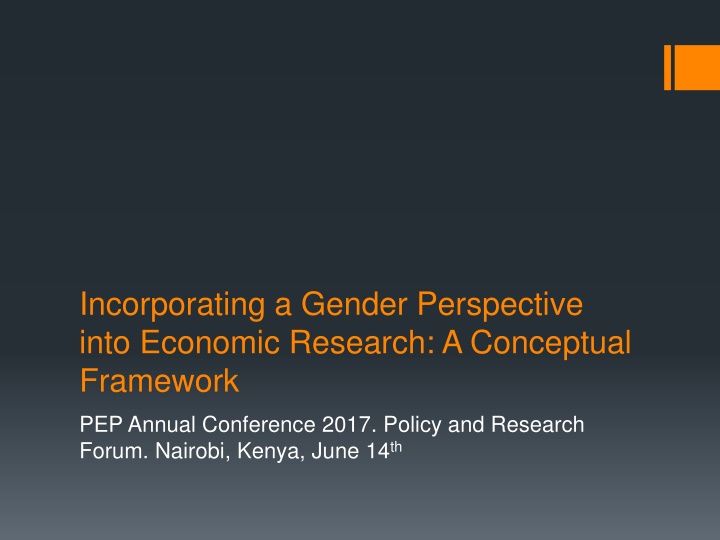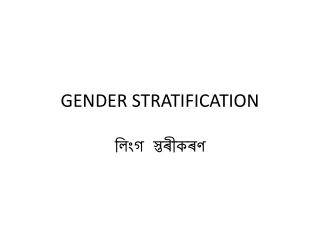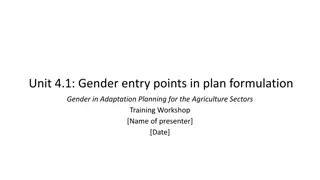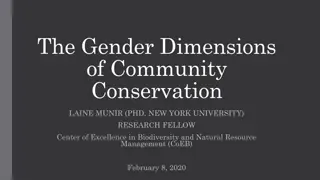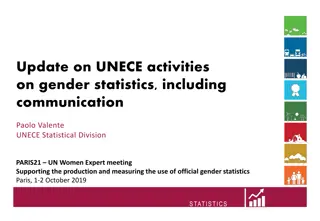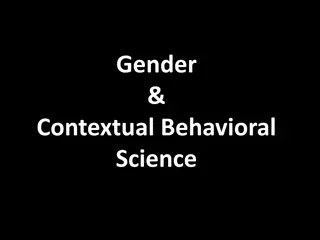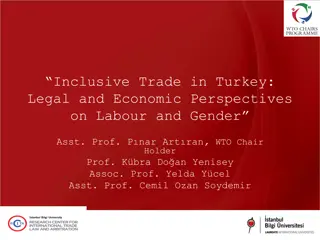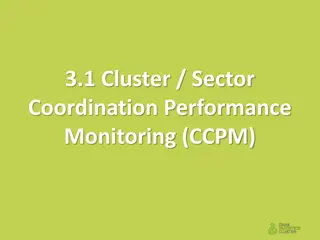Incorporating Gender Perspective in Economic Research
This content explores the importance of integrating a gender perspective into economic research, focusing on structural sources of gender inequality, the gender division of labor, unequal access to assets, norms, discrimination, and more. It emphasizes why gender equality matters and how understanding the gendered dynamics in the economy can reshape policies and measurements for inclusive growth.
Download Presentation

Please find below an Image/Link to download the presentation.
The content on the website is provided AS IS for your information and personal use only. It may not be sold, licensed, or shared on other websites without obtaining consent from the author.If you encounter any issues during the download, it is possible that the publisher has removed the file from their server.
You are allowed to download the files provided on this website for personal or commercial use, subject to the condition that they are used lawfully. All files are the property of their respective owners.
The content on the website is provided AS IS for your information and personal use only. It may not be sold, licensed, or shared on other websites without obtaining consent from the author.
E N D
Presentation Transcript
Incorporating a Gender Perspective into Economic Research: A Conceptual Framework PEP Annual Conference 2017. Policy and Research Forum. Nairobi, Kenya, June 14th
Overview What is a gender perspective? Structural sources of gender inequality The gender division of labor and segregated labor markets Unequal access to assets, finance, and technology Norms, identity, and discrimination Intra-household dynamics Violence and insecurity Incorporating gender into economic research
What is a gender perspective? Women and men occupy different positions in the economy and are subject to different constraints. Policies and programs have different effects on women and men. But a gender perspective goes beyond simply comparing outcomes for women and men. Recognition of gendered processes and dynamics in the economy. Expands the scope of what we mean by the economy . Changes the way we measure the economy. e.g. Non-market, unpaid household work.
Why care about gender equality? Intrinsic and instrumental approaches to gender equality Intrinsic important for social justice and well- being. Instrumental important for achieving other objectives
Structural sources of gender inequality Why structural? Look beyond individual choices to examine how women and men are positioned differently in the economy. Choice is still important, but women and men face different constraints. Important for evaluating economic outcomes: e.g what do we mean by inclusive growth?
The gender division of labor Unpaid household work Non-market processes, not paid (although can be paid and involve market exchanges: domestic workers) But important contribution to well-being and human development Gender division of labor Women typically spend more time working in non-market, unpaid activities compared to men. Sources of inequality Less income/earning potential. Constrained choices. Heightened risks from specialization Lower returns to women s education/less investment. Economic contribution undervalued.
Segregated labor markets Women are often concentrated in lower paying, more precarious forms of employment. Relevant for both wage- and self-employment Women s work and men s work Reinforces the gender division of labor Women earn less in paid employment and therefore specialize in unpaid work The need to combine unpaid and paid labor influences choices with respect to livelihood strategies
Unequal access to assets, finance, and technology Financial markets often exclude women or are segregated Segregated financial markets: women only have access to smaller-scale, informal, or marginal sources of credit. Assets are often unequally distributed Land tenure and inheritance laws Reduces women s earnings potential as operators of small-scale enterprises Women and men may have differential access to technology Norms regarding who operates equipment, who engages in specific types of activities
Norms, identity, and discrimination Norms regarding men s and women s role in society and the economy can be powerful constraints. Costs of transgressing these norms may be larger for women than men. Collective identities and collective action There may be a collective interest in sustaining norms that perpetuate gender inequalities (e.g. men, as a group, benefit from norms that reinforce gender inequalities) Not fixed. Norms, conventions, and identities change over time. Beyond a taste for discrimination Collective, not simply individual, dimensions
Intra-household dynamics Households are critically important economic institutions Labor supply decisions, distribution of resources, poverty & welfare outcomes. Bargaining power and distributive outcomes Women may have a weaker fallback position than men. Reinforces traditional gender roles. Access to income affects consumption patters in households with important welfare implications (e.g. children) Access to outside options improves women s choices and independence Access to paid employment/entrepreneurship linked to economic empowerment
Violence and insecurity Violence against women Imposes major limitations to choices and huge costs Threats to security limit economic choices Travel to and from workplaces Harassment and safety at work Insecurity represents a real cost to women s labor force participation and limits choice and mobility - but it is often not recognized or well measured.
Gender inequalities and enterprises Gender earnings gaps Differences in earnings between women and men What factors explain this (segregation, assets, technology, unpaid care work)? Economic mobility The ability to take advantage of new opportunities as they become available. How do constraints to mobility differ between women and men (including youth)?
Gender inequalities and enterprises (cont) Skills and education gaps Why would there be under-investment in skills acquisition among women? Example: vocational training programmes. Supply chains and market power What relationships exist between enterprises (including various intermediaries)? How are small enterprises inserted into supply chains and how does this affect distributive dynamics? Are there differences between women and men? Example: do men have better networks that advantage them in supply chains?
Incorporating a gender perspective into research design Need to be aware of gender dynamics and explicitly incorporate this analysis into the design and conduct of research. Also important for the interpretation of results Requires examining new issues and economic dynamics e.g. relationship between unpaid household work and enterprise development Use both quantitative and qualitative research methods. Gender blind research does not imply gender neutral research
Some practical guidelines Try not to treat gender as a dummy variable Separate analysis for women and men Ask yourself: do the standard approaches contain hidden biases? Do variable definitions reflect women s contributions? Include gender-sensitive household variables Composition & unpaid household work Intra-household distribution can be important Who gets/controls what? Access to assets, finance, technology Recognize segregation by branch of activity Norms and values If information exists, include it.
